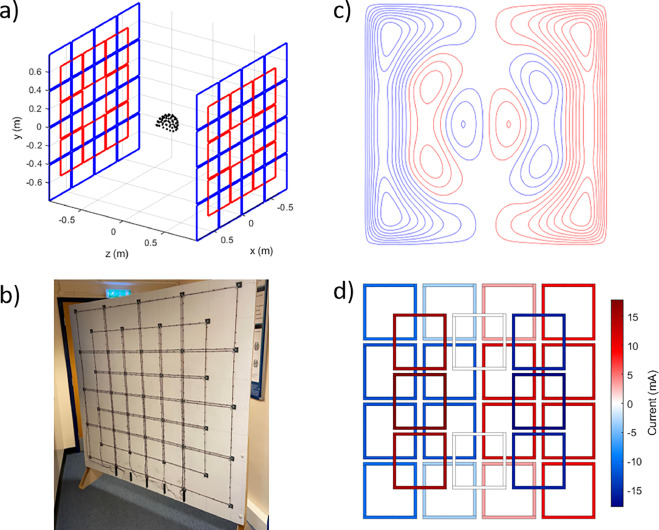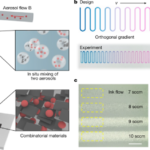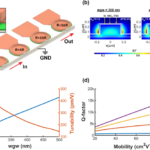2023-05-25 英国・ノッティンガム大学

・ ノッティンガム大学が、起立中や歩行中のユーザーの脳の画像を撮像できる、ウェアラブルブレインスキャニングシステムを初めて実証。
・ 新設計の磁場制御システムによりユーザーの挙動の自由度が大幅に向上し、パーキンソン病、脳卒中や脳震盪等の挙動に影響を及ぼす、広範囲にわたる神経系の問題のより深い理解に貢献する。
・ 軽量のヘルメットに埋め込んだ光ポンピング磁力計(OPM)と呼ばれる小型センサーが脳細胞活動で発生する磁気を測定する脳磁計(MEG)で、新生児から成人まであらゆる年齢層に対応。センサーが頭部に近接するため、データ品質が飛躍的に向上する。スキャニング中にユーザーが動くことのできなかった大型で固定式の従来のブレインスキャナーからの大きな進展となる。
・ OPM での脳信号の測定には、磁気シールドルーム(MSR)での磁場ゼロ状態で作動する必要があり、地球の磁場の 1/50000 に磁場を厳密に制御するための機器を MSR に含める必要がある。
・ これには、複雑なワイヤパターンで狭く固定された領域にキャンセリング磁界を発生させて対応しており、ユーザーは座った状態で頭部を動かすことができるが歩行はできない。
・ 本研究では、複数のシンプルな方形コイルから構成される「マトリックスコイル」システムを設計することでこの課題を解決。コイル電流のリアルタイムでの継続的な再構築により、センサーアレイが検知する、ユーザーの挙動による磁場の変化を補足する。
・ 2020 年にスピンアウト企業の Cerca Magetics を設立し、OPM-MEG リサーチシステムを商用化。英国の Young Epliepsy’s Health and Research Centre を始め、世界の多数の研究所に導入されている。現在、臨床現場への導入に向けた承認申請を実施中。
・ 本研究には、UK Quantum Technologies Programme の一環として、英国立健康研究所(NIHR)、
Wellcome Trust および英国・工学・物理科学研究評議会(EPSRC)が資金を提供した。
URL: https://www.nottingham.ac.uk/news/brain-imaging-is-on-the-move-with-wearable-scanning-development
<NEDO海外技術情報より>
関連情報
NeuroImage 掲載論文(フルテキスト)
Enabling ambulatory movement in wearable magnetoencephalography with matrix coil active magnetic
shielding
URL: https://www.sciencedirect.com/science/article/pii/S1053811923003087?via%3Dihub
Highlights
•A flexible ‘matrix coil’ magnetic shielding system is presented.
•Performance is evaluated in the context of OPM-MEG.
•The system compensates motion artefacts induced by movement of OPMs.
•The system corrects for sensor gain changes that distort source reconstructions.
•The system enables ambulatory movement during a study.
Abstract
The ability to collect high-quality neuroimaging data during ambulatory participant movement would enable a wealth of neuroscientific paradigms. Wearable magnetoencephalography (MEG) based on optically pumped magnetometers (OPMs) has the potential to allow participant movement during a scan. However, the strict zero magnetic field requirement of OPMs means that systems must be operated inside a magnetically shielded room (MSR) and also require active shielding using electromagnetic coils to cancel residual fields and field changes (due to external sources and sensor movements) that would otherwise prevent accurate neuronal source reconstructions. Existing active shielding systems only compensate fields over small, fixed regions and do not allow ambulatory movement. Here we describe the matrix coil, a new type of active shielding system for OPM-MEG which is formed from 48 square unit coils arranged on two planes which can compensate magnetic fields in regions that can be flexibly placed between the planes. Through the integration of optical tracking with OPM data acquisition, field changes induced by participant movement are cancelled with low latency (25 ms). High-quality MEG source data were collected despite the presence of large (65 cm translations and 270° rotations) ambulatory participant movements.




